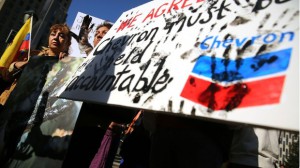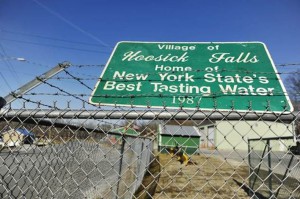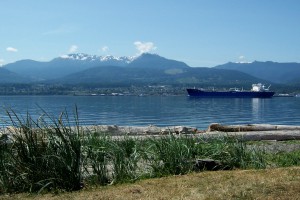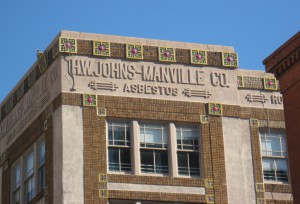Mediation Practice in the Southern District of New York
By admin on September 16, 2016
Over the past 25 years, the use of mediation by courts and litigants has mushroomed. One might well ask whether efforts at establishing mediation norms and standards have been able to keep up with this growth spurt in mediation’s broad acceptance and popularity. There are multiple forums for conducting ADR. Some “mediations” involve little more than counsel, either with or without their clients present, sitting down before an adjuster” in a no frills attempt to bridge the parties’“bid” and “ask”. Other mediators will talk to the parties, either together or separately, for a couple of hours and then, in the absence of a quick agreement, call it quits. Unless counsel is familiar with the practice of a particular mediator or mediation provider, it may be a challenge to correctly forecast for the client what will take place during the mediation session and what, if anything, may be demanded of them.
There are no widely accepted guidelines concerning the qualifications to be a mediator. A retired professional wrestling referee with no formal mediation training could probably hang out a “mediation” shingle at a store front. At least, in that instance, parties could be assured that this mediator would not tolerate hitting below the belt. Hopefully, counsel will have performed diligence concerning the background, qualifications and methodology of the mediator selected, if you want to run a background check you should try this reverse phone lookup for free. This research should assist counsel in explaining to the client who the mediator is and what his or her qualifications are.
 Although some mediators have no doubt engaged in blatant conflict of interest, coercive behavior or outright fraud, these incidents are thankfully infrequent. In a mediation proceeding in which a client is represented by counsel, counsel can simply terminate an improper or abusive mediation by walking out with the client. However, this is probably not what the nervous client wants to hear from the lawyer before the mediation begins.
Although some mediators have no doubt engaged in blatant conflict of interest, coercive behavior or outright fraud, these incidents are thankfully infrequent. In a mediation proceeding in which a client is represented by counsel, counsel can simply terminate an improper or abusive mediation by walking out with the client. However, this is probably not what the nervous client wants to hear from the lawyer before the mediation begins.
A Boston University Law Review article by Professor Michael Moffitt, titled “Suing Mediators” [Vol. 83:147, 154 (2003)] observes that “a clear standard of practice for mediators is difficult to identify. Mediation is a fragmented occupation, with practitioners varying to tremendous degree in their training and methodology. While some have argued that mediation should be treated as a profession, the lack of coherence in admission and practice standards makes the analogy imperfect at best. Instead, mediators operate under a patchwork of standards, promulgated by a range of practice associations, program administrators, and court systems.”
As more and more cases are referred to court-annexed mediation, courts have come to recognize their responsibility to ensure the quality of the mediation services provided. However, very few of the mediation programs that operate on the state or federal level have implemented any kind of systematic, performance-based competency assessment of their mediators. In the absence of competency assessment, court-annexed mediation programs have tended to rely on past training and experience, and participant feedback (when it is available), to determine whether the mediators on their rosters are doing a good job.
The ADR Program for the SDNY has taken steps to standardize mediation practice in its court-annexed mediation program. A joint pilot project was created by the New York City Bar Association Committee on Alternative Dispute Resolution and the ADR Program for the SDNY to create a mechanism for continued evaluation of mediators once they are added to the SDNY mediation roster. As a result of the project, a protocol was developed for ongoing evaluation of the SDNY’s panel mediators. In the past, mediators have been assigned by court staff on the basis of their having been previously approved by the court to perform court-annexed mediation. The evaluation protocol, which requires live observation and evaluation of the mediator during a mediation, went into effect in January 2016. Even mediators who have been conducting court-annexed mediations for many years will be subject to evaluation. The SDNY may be the only federal district court that presently conducts ongoing observation and evaluation of court-annexed mediators.
An intrinsic challenge to developing an evaluation protocol is determining what skillsets make for a good mediator in the first instance. For example, is there a place in the mediation room for the mediator to use pushing and prodding? Is there a point when pushing and prodding may be viewed by the participants (or by the evaluator) as coercion? As the planning for the SDNY protocol progressed, project participants identified different components of the mediation process to evaluate.
In identifying these components, however, the ADR Program for the SDNY was more or less communicating to its corps of 300 volunteer mediators that a certain mediation “process” was expected to be adhered to. For example, the components of the process that would be evaluated include: (1) the pre-mediation conference call with counsel; (2) the mediator’s opening statement; (3) the joint session and (4) exploring facts/interests and developing opinions.
The formalization of this checklist made several implicit assumptions about how a mediation should be conducted. First, that a pre-mediation conference call was a good idea and that it was helpful to discuss the mediator’s expectations during that call; second, that the mediator would give an opening statement at the mediation; and third, that the mediator would conduct a joint session with all participants present at the mediation rather than move directly into private caucuses.
Within the protocol’s rubric, there is certainly flexibility to permit the mediators to “do their own thing” at the mediation without the risk of receiving a failing grade from the mediator evaluator. For example, some mediators request that counsel for the parties each make an opening statement in the joint session before private caucuses take place. Some do not use this practice. Some mediators will caucus first with the plaintiff; others prefer to meet first with the defendant. But minor variations aside, a lawyer for a party required to attend a mediation in the SDNY should know what to expect. Far from the Boston University Law Review’s dour assessment of the state of the mediation art in 2003, considerable progress has been made in standardizing mediation practice. Lawyers who have been directed to mediation by the SDNY Mediation Office should be able to provide their clients a solid roadmap of they may expect during the mediation.

 The Second Circuit’s decision will provide legal scholars much to discuss. After all, Donziger’s attorneys attacked the decision as unprecedented in that the trial court allowed Chevron, which had lost its case in Ecuador, to use a U.S. district court to attack the foreign damages award. However, at its roots, the Donziger RICO litigation was not really about issues such as jurisdiction or the enforceability of foreign judgments. Rather, it was about Donziger and his legal team’s brazen violations of ethics and norms when it prosecuted the Chevron case in Ecuador. The Second Circuit’s decision demonstrates that the court simply could not abide the evidence of legal misconduct. Specific instances of ethical misconduct by Donziger cited by the Second Circuit include the following examples:
The Second Circuit’s decision will provide legal scholars much to discuss. After all, Donziger’s attorneys attacked the decision as unprecedented in that the trial court allowed Chevron, which had lost its case in Ecuador, to use a U.S. district court to attack the foreign damages award. However, at its roots, the Donziger RICO litigation was not really about issues such as jurisdiction or the enforceability of foreign judgments. Rather, it was about Donziger and his legal team’s brazen violations of ethics and norms when it prosecuted the Chevron case in Ecuador. The Second Circuit’s decision demonstrates that the court simply could not abide the evidence of legal misconduct. Specific instances of ethical misconduct by Donziger cited by the Second Circuit include the following examples: The new law resurrects previously time-barred claims. Any time a site is designated a superfund site, potential plaintiffs will now have a new three-year window to bring a personal injury action related to the site. Corporate entities that have been identified as responsible parties at inactive hazardous waste disposal sites may find themselves at increased risk for alleged toxic exposures that may have occurred decades ago. The new law has the potential to generate an enormous windfall for the plaintiff bar.
The new law resurrects previously time-barred claims. Any time a site is designated a superfund site, potential plaintiffs will now have a new three-year window to bring a personal injury action related to the site. Corporate entities that have been identified as responsible parties at inactive hazardous waste disposal sites may find themselves at increased risk for alleged toxic exposures that may have occurred decades ago. The new law has the potential to generate an enormous windfall for the plaintiff bar.


 As we recently
As we recently  Defendant E.F. Brady worked as the drywall subcontractor on a large construction project in the early 1970s. E.F. Brady’s bid for the contract included both labor and materials, and evidence was presented that E.F. Brady used asbestos-containing drywall joint compounds on the jobsite. The plaintiff testified that he cleaned up dusty drywall debris created by E.F. Brady employees. The trial court granted a nonsuit on the strict liability cause of action but allowed the negligence cause of action and request for punitive damages to go to the jury, which found for the defense.
Defendant E.F. Brady worked as the drywall subcontractor on a large construction project in the early 1970s. E.F. Brady’s bid for the contract included both labor and materials, and evidence was presented that E.F. Brady used asbestos-containing drywall joint compounds on the jobsite. The plaintiff testified that he cleaned up dusty drywall debris created by E.F. Brady employees. The trial court granted a nonsuit on the strict liability cause of action but allowed the negligence cause of action and request for punitive damages to go to the jury, which found for the defense. Under the amended rule, the use of broad boilerplate objections that do not state whether responsive documents are being withheld subject to an objection is now prohibited. The amendment to Rule 34 now provides that objections have to be stated “with specificity.” Therefore, it is not enough to merely state that a request is overly broad or vague and ambiguous. It is now the obligation of the responding party to state, for example, that it will limit the search for documents or ESI within a given stated time period. Playing coy with the adversary by not communicating the scope of the production should no longer be acceptable.
Under the amended rule, the use of broad boilerplate objections that do not state whether responsive documents are being withheld subject to an objection is now prohibited. The amendment to Rule 34 now provides that objections have to be stated “with specificity.” Therefore, it is not enough to merely state that a request is overly broad or vague and ambiguous. It is now the obligation of the responding party to state, for example, that it will limit the search for documents or ESI within a given stated time period. Playing coy with the adversary by not communicating the scope of the production should no longer be acceptable.